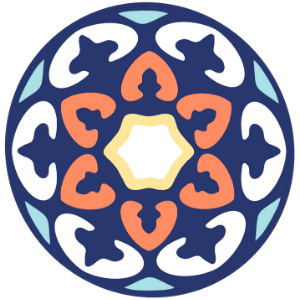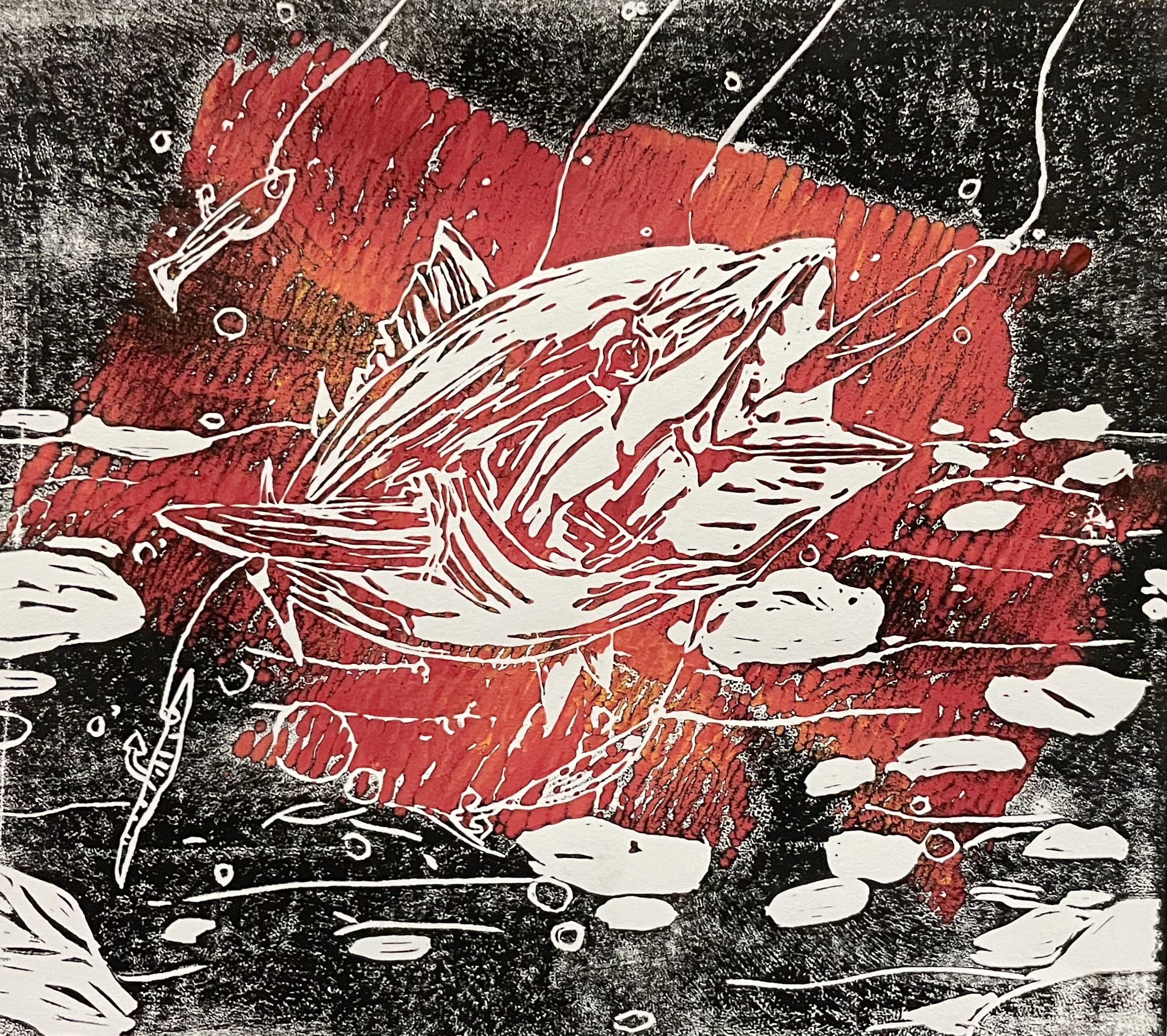Under the sea: students inspired by science
I teach at the middle school level and have an 8th grade Portfolio class of advanced art students. In this class students get more freedom to explore their style, expand on their projects and deal more with concepts as they relate to the world, their art and self-expression.
Skype A Scientist with Ann Marie Hulver from Ohio State University
I like teaching printmaking because it is the medium I love to work with it in my personal art practice. Printmaking doesn't get taught very often, it is an exciting and different medium for students to try. I like teaching it because it lends itself beautifully for mixed media.
For our project, I introduced the idea of ocean education and conservation to Portfolio and I let them vote on whether they wanted to explore the topic. They decided they wanted to try it out since some of them have never been to a beach.
If you don’t have a middle-schooler, I can tell you that the zoom meeting was awkward and I am grateful to Ms. Hulver for taking the time to visit with our class. My students were silent and would make questions via chat rather than unmute themselves. But in true middle-schooler fashion, as soon as the meeting was over their excitement was apparent.
I wanted to break down the project for my students so they could really focus on creating engaging designs for their chosen topic. We spoke about:
The difference between an empathetic response and an aesthetic response to an artwork
The art of conservation and ARTivism
Making a difference through art
Artists who are partnering up with scientists or whose work heavily relies on ocean education and conservation
9 ocean conservation issues
For their final project students needed to research and reflect on the following:
Decide what your ocean conservation is
Do some research on the topic
What is happening?
Why is it important?
Who does it affect and why?
Good quotes or information that can help people understand the issue
Things you learned about the topic that you didn't know before
Why does this interest you?
Create 3 sketches of your design
Choose 1 for your project and color, making sure to add which techniques you will use
The following art pieces were made by my students:
Raegan L.
My category of choice was sea life endangerment. My composition was a split piece of art that conveys two sides to a story. One is a whale in its natural habitat going along peacefully throughout its life. The other side is a beached whale who is trapped and unable to escape its situation. Beaching is quite common to whales and while it isn't necessarily caused by humans there are still ways we can help these whales get back to the ocean and back into their well needed environment. I want this piece to open people's eyes into the lives of these creatures in order to persuade others to want to help and make change. There are other ways sea creatures are becoming endangered. These ways include human tampering in the environment such as oil pollution, trash pollution, and captivity. I hope that the emotion and story I am trying to communicate is able to change the way people see the ocean and the species that live in it for the better.
Olivia A.
I chose my print project because it has to do with over-fishing. I chose over-fishing and my design because people are fishing too much and the population is decreasing.
Ashlyn M.
This piece of artwork is based on the theme of plastic pollution, plastic pollution is a major issue in the ocean, endangering many species and harming ocean life. Because plastic pollution is such a major issue, I chose to use it as my topic. I used printmaking supplies and ink, carving the shape of my blocks and then stamping them onto the paper for the turtle and the coral. For the background, I chose to do a gradient of white to blue to give the ocean some depth. I then put some pieces of plastic onto the edges of the paper to represent the plastic in the ocean. A few things you may not know about plastic pollution and its effect on the ocean environment is that it breaks down into what is called microplastics, which travel through the ocean, all around the world. Millions of animals are killed by plastic every year because of entanglement or starvation.
Jayla T.
My artwork is a coral with fish swimming around it. The title of my piece is fading coral and a prominent element in my piece is definitely color. My artwork is printed on paper. I used printing ink, monoprint ink, my block, and paper. The techniques I used were mono-printing and block printing. The issue that my artwork shows is coral bleaching. Coral bleaching is where corals lose their color due to global warming. When the waters get warm the algae that live in the coral and give it its color are forced out of the coral. When the corals start to die this also means that fish that live in the coral doesn’t have a place to live. This is why coral bleaching is so important because it doesn’t just affect the coral but also the fish that depend on it to live. My goals for this artwork were to express what coral bleaching does and why we should start doing something about it.
Arianna H.
My main inspiration for my art piece was the utter amount of over-fishing that is changing the world as we know it and slowly making our oceans more and more of a dangerous setting. This theme inspired me so much that my art piece portrays this point. I hoped to describe this urge this point to the viewer. I used a carving block and paint to show a piece portraying my point and I hope the viewer gets a better understanding of the issue.
Vincent Y.
The topic of my artwork is over-fishing, I trace the lines on my block and use the carving tool to carve it out. The big idea of my artwork is to let people know that over-fishing is hurting our ocean ecosystem, so we need to think about it. My goal is to let the fishes in the ocean stay alive and keep maintain the ecosystem. Things I learned from my artwork are Over-fishing could damage the ocean ecosystem really hard, so we need to think about this seriously and do something, not just talk about it.
Brooklyn P.
I drew this piece to shoe overfishing for the blue fin tuna. These beautiful creatures have suffered because of humans. Also I don’t really think it’s ok to over-fish but I do love me some sushi.
Sophia H.
After students finish working on a project, we have an art critique. Students stand up in front of the class and walk us through their design choices, their meaning and message, things they thought were successful, and things they can improve for next time. Students also write an artist statement that goes with their piece. An artist statement is a piece of writing that helps the viewer understand and get insight into the work, which is the text next to their artwork.
Art students shared that meeting a real-life scientist helped them understand the topic broadly and know that they were listening to a trusted professional in the field. Being able to ask questions to a professional and doing in-depth research on their chosen topic allowed them to create an artwork they connected with and visually express their meaning and message more clearly. Overall, my students had a lot of fun learning about a new topic and creating an artwork with meaningful impact.
I hope that sharing my student’s work inspires other artists, art educators, and scientists to work together in sharing the important work of ocean education and conservation with both local and international communities. When we share our knowledge we can create compelling work that can re-shape, influence, and motivate others to protect our oceans.





















